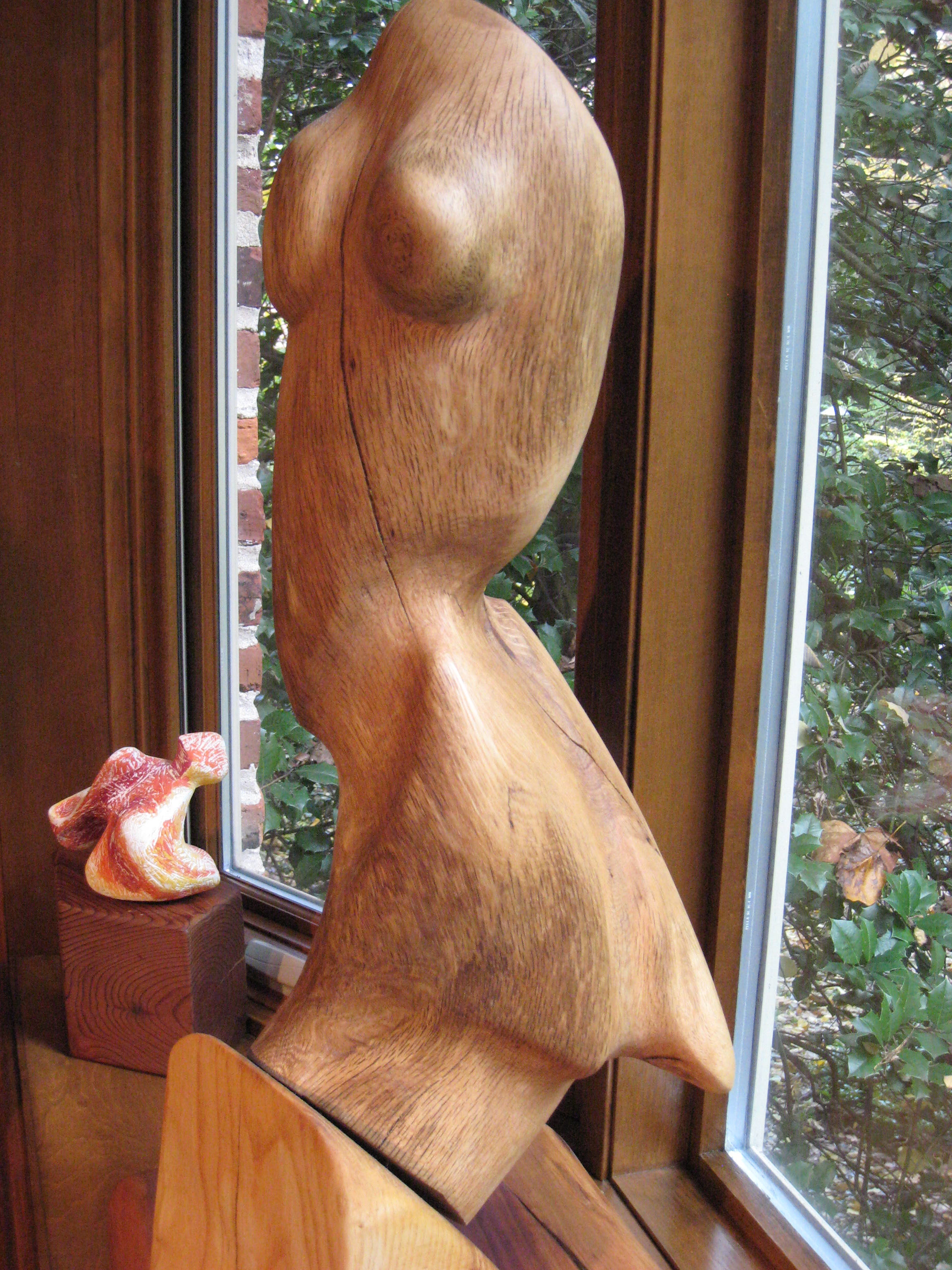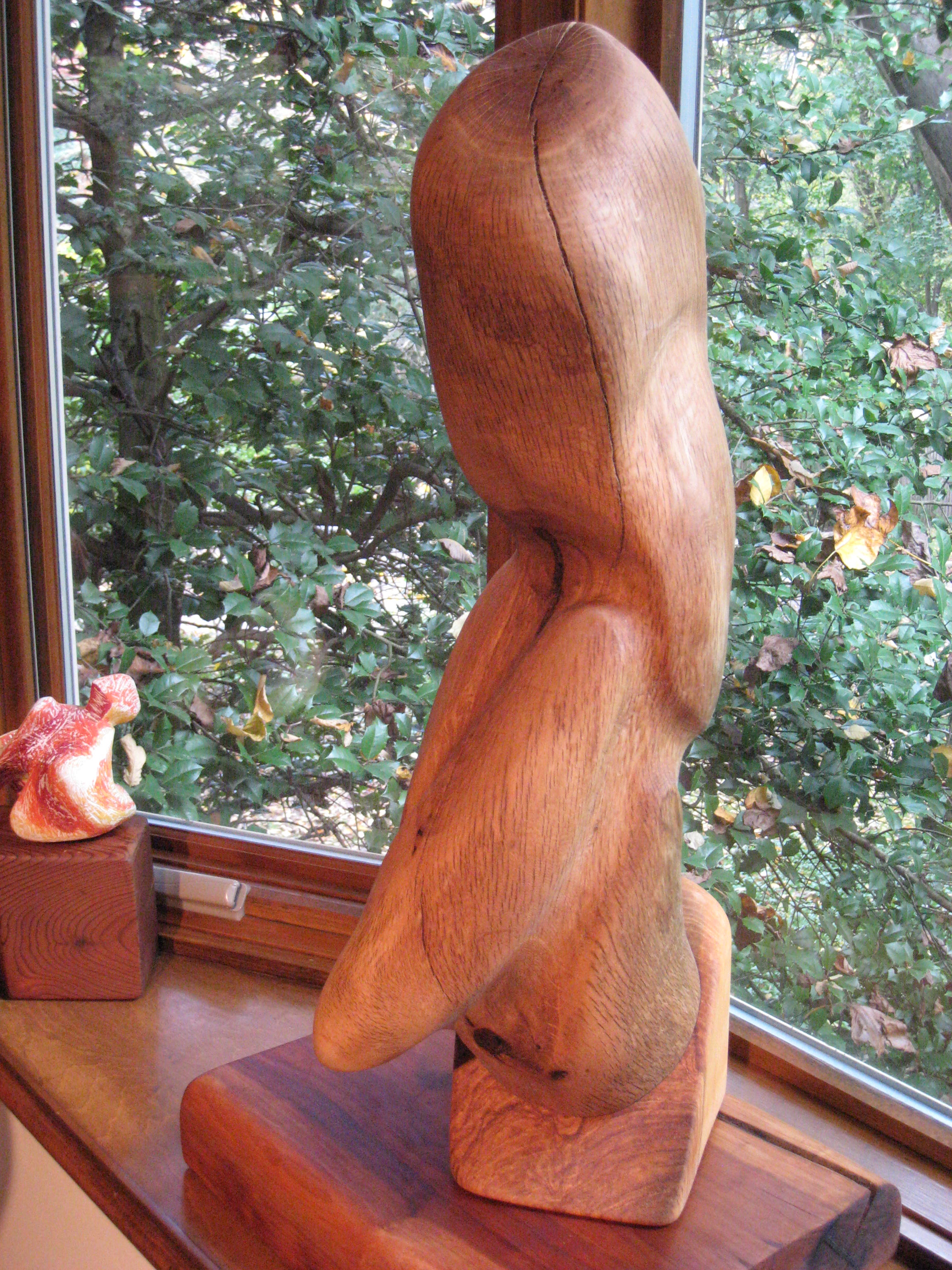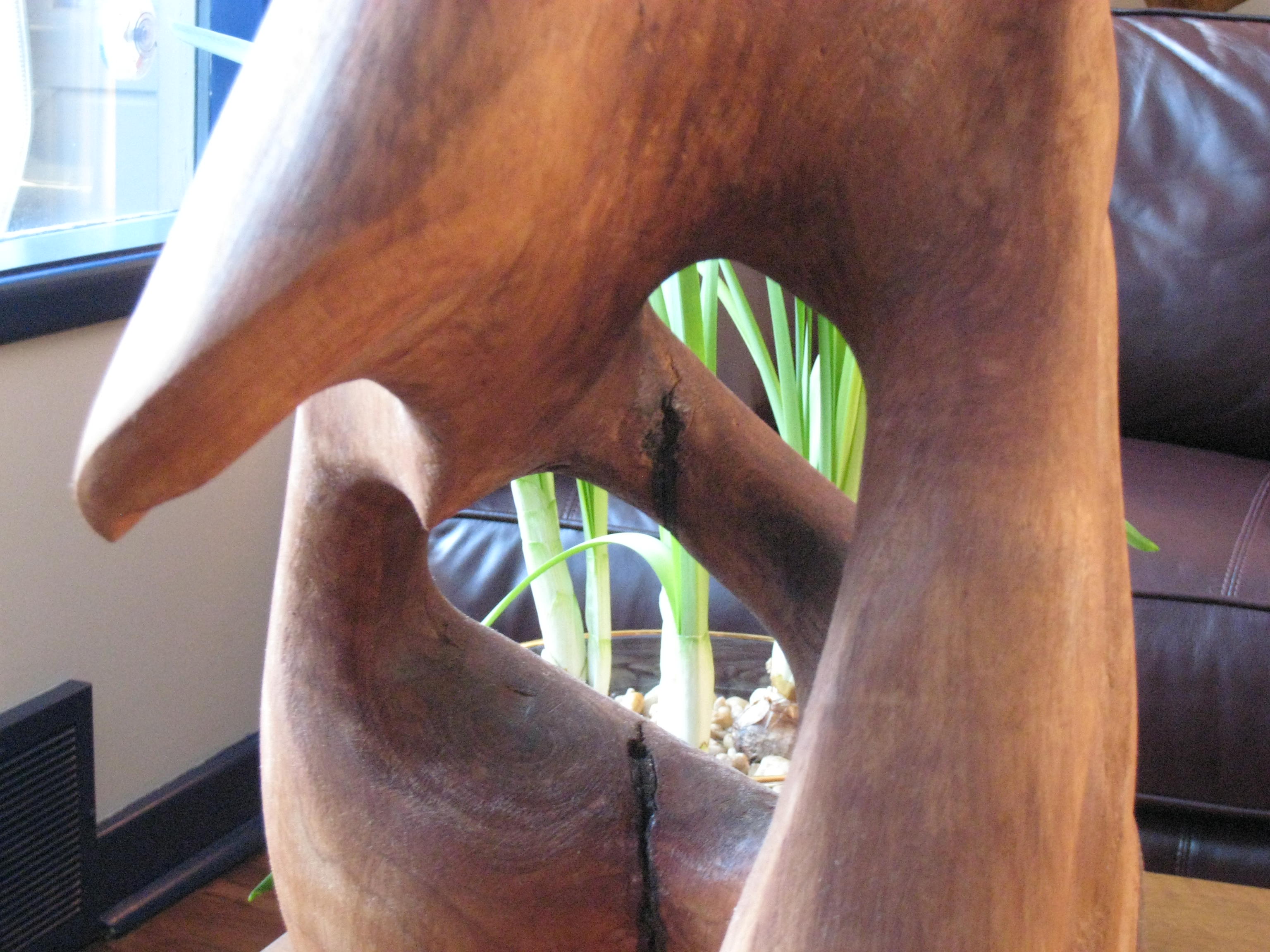






It was a dark and stormy night in Chestnut Hill, Philadelphia, when I heard a loud crash in the middle of a torrential lightning storm. The next morning I found that a large limb from a two-hundred-year-old oak tree had been flung by the storm against our garage wall and had smashed an open window to pieces. After I sawed up the heavy branch and dragged the logs off to our woodpile, it struck me that this was a gift from heaven. I was just starting a sabbatical from teaching and the logs inspired me to make time now to return to my wood carving after a hiatus of more than a decade.
It is usual to let wood dry out slowly so it does not check and split. But I knew that dry oak would be hard to carve and that I could make much faster progress if I carved the wood while it was still green and then treated it carefully so that it would dry without checking. This worked amazingly well. I carved the sculptures so that no volume would be too thick, so that outside layers would not dry out faster than interiors and cause strains. I was able to finish the carving before the freezing nights of winter came, and I oiled the sculptures well to prevent rapid drying and cracking.
I make four sculptures from the oak and then went on to carve a more ambitious piece from a cherry tree log that a friend had brought me from his back yard in Illinois. The creation of these sculptures is documented on this page.
The first sculpture I did was relatively simple, to ease me back into the process. I took the elegant elongated form of Brancusi's Bird in Flight, which he had cast in metal. I challenged myself to see how well I could reproduce this from a log. Brancusi had reduced the image of a bird in flight to a rather simple, abstract, streamlined form. As I worked on it, I discovered the subtle complexity of his form and adapted it somewhat to the log I worked on, which I had selected for this project.





Bird in flight. Influenced by Brancusi. Oak. Philadelphia. 2010.
The next sculpture was also an upright form, but I wanted to open it up. In previous pieces, I had found that a vertical opening could be formed as the pairing of two vertical masses, with the opening scooped out between them and defining them as separate forms. This time I added an opening from above, so that the negative form from above flows into the opening below. I tried to develop contrasting forms coming out the top to add to the asymmetry of the piece--resulting in a vaguely male/female contrast, supported by a lower-leg like femur structure.





Hip joint. Oak. Philadelphia. 2010.
The third sculpture was based on the principle that a sculpture should be compact enough to roll down a hill without its parts breaking off. I started with a football shape that one could cuddle in ones lap, like a cat with its head stretching out to be rubbed. The concavity that opened the form without penetrating it was based on a water-polished rock I found during my explorations at Lake Powell earlier that summer. I left the bottom rounded so that the piece could be held, fondled, and then set down to rock and find its own center of gravity. The beak-like ending of the elongated neck gave the piece a strong resemblance to a Mexican duck sculpture that I always loved.





Duck form. Inspired by a Lake Powell rock. Oak. Philadelphia. 2010.
The female form is always a favorite source of inspiration and sensuality. Here I tried to bring out sinuous twists of flowing masses, precariously balanced in motion.





Female torso. Oak. Philadelphia. 2010.
My last sculpture of the year was more ambitious. The log divided into four, so I used three of them for legs. Again, I wanted to open the wood up to get away from the simple log shape and to explore the interior of the cherry tree. I broke through two cavernous openings from the back and scooped out much of the mass in the front, behind and below a prominent beak form that emerged from the fourth leg. The openings once more evolved from holes in the wood to spaces surrounding new positive forms defined by the negative spaces. They contributed to a spiraling motion that I used to animate the log. I then added decorative touches to enliven the piece further: a piercing eye next to the beak and a flowing channel to add to the spiral. The feet were given various pointed forms to lift the piece off its base. All of this emerged gradually as I worked on the wood and studied its development and its needs. Cherry wood has a variety of structural details, which I tried to uncover and retain, from beautiful patterns just below the bark to interior crevices filled with sap.








Sly eye. Cherry wood. Philadelphia. 2010.